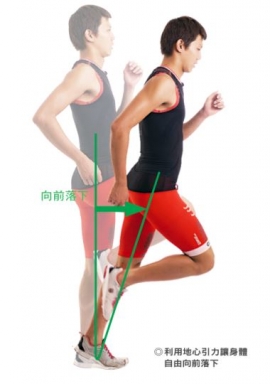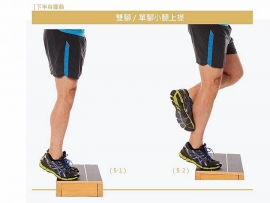在NCBI的网站上介绍了8个针对肌腱变性(Tendinosis)的自我照顾的建议,山姆伯伯做个简译分享:
1. Rest (休息)
People with low-grade tendon injuries often find it difficult to rest as much as is necessary, especially as symptoms subside. With repetitive work tasks, the patient is recommended to take a break for one minute every 15 minutes and a five-minute break every 20–30 minutes.
( 人们在轻微的肌腱受伤时,休息是必要的,但要休息却是件困难的事情。从事重复动作的工作时,建议病人每隔15分钟要休息1分钟;每隔20~30分,要休息5分钟。)
This reduction isn’t much considering its role in preventing long-term pain and disability. Some people will need to rest even more than this at the start of treatment. The patient should be advised to stay aware of their body as it heals. If the activity they are engaging in is causing pain, then they are probably doing too much.
( 这样的休息方式对于预防长期疼痛或残病并不算太好。有些人甚至需要更多的休息时间,并且在进行治疗的过程中,要懂得掌握自己的身体状况。若病人从事活动引起疼痛时,他们可能做的太多了。)
2. Adjust ergonomics and biomechanics (调整人体工学设计及出力方式)
Small changes can make a big difference. With regard to ergonomics, for example, cashiers are encouraged to press the register keys as lightly as possible, and computer users should be sure their wrists are resting in a neutral position while typing.
( 小的变化会带来很大的不同。考虑到人体工学设计,比如,收银员尽可能轻巧的按下註册键;电脑族在进行打字时,应该确保手腕放置在一个适中的位置。)
Larger companies and government organizations often have an ergonomic specialist available to consult with employees about their workstations. Physical therapists are experts at recognizing and adjusting improper biomechanics that might be causing injury.
( 善长于人体工学的专家可以提供民众关于工作环境设计上的建议;而物理治疗师可以识别与调整民众可能会造成伤害的的力学方式。)
3. Use appropriate support (合适的护具)
Physical therapists can also recommend appropriate support to reduce tensile stress on the tendon, such as bracing or taping
( 物理治疗师也可以建议病患适宜的护具,减少对于肌腱的拉伸应力,像是护具或贴扎。)
4. Stretch and keep moving, though conservatively (伸展并谨慎地保持活动)
Lightly stretching and moving the affected area through its natural range of motion while minimizing pain will prevent shortening of the related muscles (preserving active range of motion and flexibility). It can also increase circulation, thereby assisting the healing process.
( 在自然的活动范围下,轻微的伸展及活动受伤的区域,可以减少庝痛、防止相关肌肉的短缩,让肌肉主动保持其活动范围及柔软度,同时也可以增加血液循环,有助于治癒的过程。)
Stretching can also elongate the muscle-tendon unit, reducing the tension placed on the tendon during activity, thereby reducing the chemical changes that cause degeneration.
( 伸展也可以拉长肌键单位,减少活动时在肌键上的张力,进而减少会导致肌腱变性的化学变化。)
5. Apply ice (冰敷)
Ice causes vasoconstriction and is thought to address the abnormal neovascularization of the tendon tissue. Clinical experience indicates that icing is helpful for tendinopathies even though the reason why it works is not yet fully understood.
( 冰敷会导致血管的收缩,并且被认为可以解决肌腱组织的异常新生血管(Neovascularization)。临床经验指出,冰敷有助于肌腱病变,但原因尚未被完全的了解。)
Use ice for 15–20 minutes several times a day (allowing for at least 45 minutes in between icing session), and after engaging in activities that utilize the tendon.
( 一天进行数次冷敷,并且在活动结束后也需要,每次进行15~20分钟。各次冰敷之间至少要间隔45分钟,让组织先回到正常的温度。)
6. Eccentric strengthening (离心训练)
An eccentric strengthening regimen done 1–2 times daily for 12 weeks has been clinically proven to be a very successful treatment for tendinosis, especially when the exercises are performed slowly. Eccentric strengthening is “lengthening a muscle while it is loaded and contracting.”For example, lengthening one’s bicep while holding a dumb-bell in one’s hand would stimulate eccentric contraction.
(每日进行1~2次离心训练,连续进行12周,在临床上已被证明是治疗肌腱变性非常成功的方式,尤其以缓慢的方式来进行动作。註:离心运动可以先参考“负向进行的训练方式”。)
Eccentric strengthening effectively stimulates collagen production, improves collagen alignment, and stimulates collagen cross-linkage formation, in turn improving tensile strength. Eccentric strengthening might also help to reduce ground substance and tendon volume (swelling/thickening).
( 离心训练有效地刺激胶原蛋白的生成,改善胶原蛋白的排列,并刺激胶原蛋白交叉连繫的形成,进而改善抗拉强度(Tensile Strength)。离心训练可能也有助减少基底质及肌腱体积(肿胀与增厚)。)
It has also been proposed that part of the benefit of eccentric strengthening is the stretching involved, as described above. It can be helpful to consult with a physical therapist to maximize the benefit of strengthening exercises and to minimize the possibility of re-injury.
而离心训练也有伸展肌肉的益处,在上面已经有介绍到。离心训练的益处,可以将再度受伤的可能性降到最底。)
7. Massage (按摩)
Massage stimulates circulation and cell activity, especially when done at the appropriate depth. Deep-friction massage applied to the tendon serves to stimulate fibroblast activity and generate new collagen. Stasinopoulos and Johnson report that applying deep-friction to the tendon for at least ten minutes after the numbing effect has been achieved results in reduced pain and increased strength and mobility.
(按摩会促进血液循环及细胞的活性,尤其在进行完适宜的深层按摩。在肌腱上进行深层的按摩会刺激纤维母细胞(fibroblast)的活性,并且产生新的胶原蛋白。研究指出,在麻木的感觉出现之后,进行肌腱深层的按摩至少10分钟,可以减少疼痛,并增加肌力及灵活度。)
Lowe states that he has found it effective to apply friction to the tendon in multiple short bursts of 20–30 seconds interspersed with other techniques; this strategy allows for mobilization of the tissue while minimizing discomfort for the patient. Myofascial techniques and trigger-point therapy can reduce fascial restrictions, scar tissue, and trigger points in the muscle connected to the tendon, relieving tension on the tendon.
( 肌筋膜技术及激痛点治疗可以减少肌膜限制、疤痕组织及位在肌肉连结肌腱处的激痛点,并且释放肌健上的张力。)
Myofascial techniques, lengthening deep-tissue techniques, stretching and active-release techniques can reset muscle memory to a more lengthened position, reducing the tension placed on the tendon during activity. A variety of massage techniques can decrease overactive pain messages from sympathetic nervous system firing, increase circulation, and improve overall tissue health.
( 肌筋膜技术、延长深层组织技术、伸展及主动放松技术可以重置记肉记忆,更延长其位置,减少在活动中对于肌健的张力。各种按摩技术可以减少来自于亢奋的交感神经系统所产生的过度活跃的疼痛信息,并增加血液循环及提供整体组织的健康。)
8. Nutrition (营养)
Vitamin C, manganese, and zinc are all important for the synthesis of collagen production. Vitamin B6 and Vitamin E have also been linked to tendon health. Patients might benefit from talking with their primary health care provider or a nutrition specialist to be sure their intake of these nutrients is sufficient.
(维他命C、锰、锌都是胶原蛋白生产的合成过程中十分重要的营养素。维他命B6及维他命E也跟肌腱的健康有关联。患者可以跟健康照设的专业或是营养专家进行咨询,以确保摄取足够的营养。)
希望以上的帮助对于大家对于自我照顾上有所帮助啰。
文章来源:山姆伯伯工作坊



